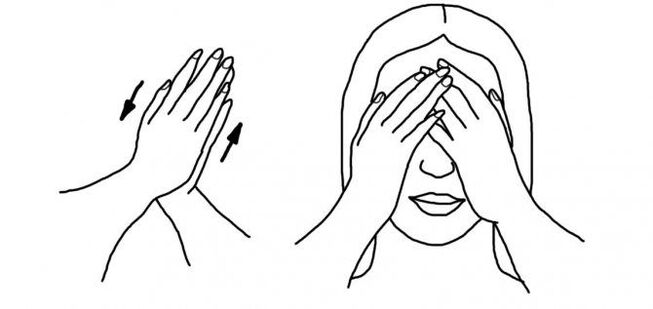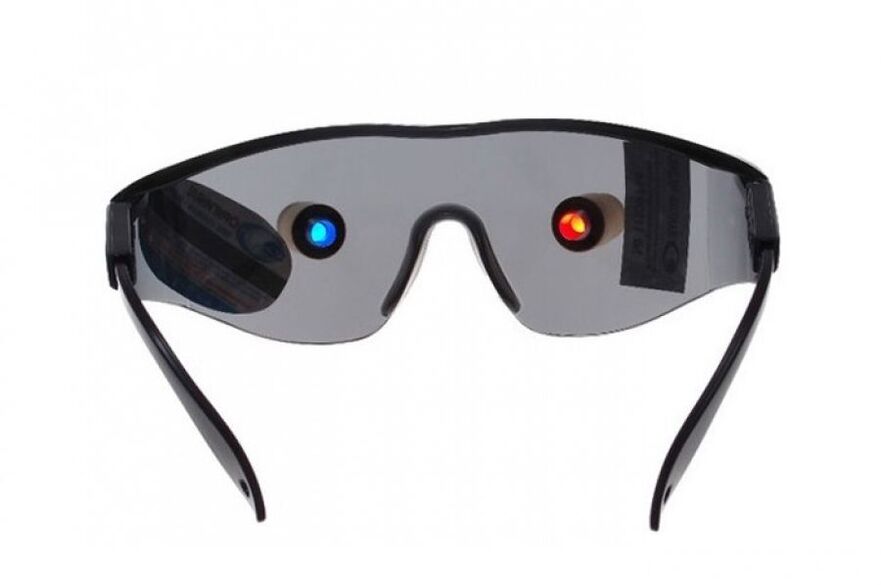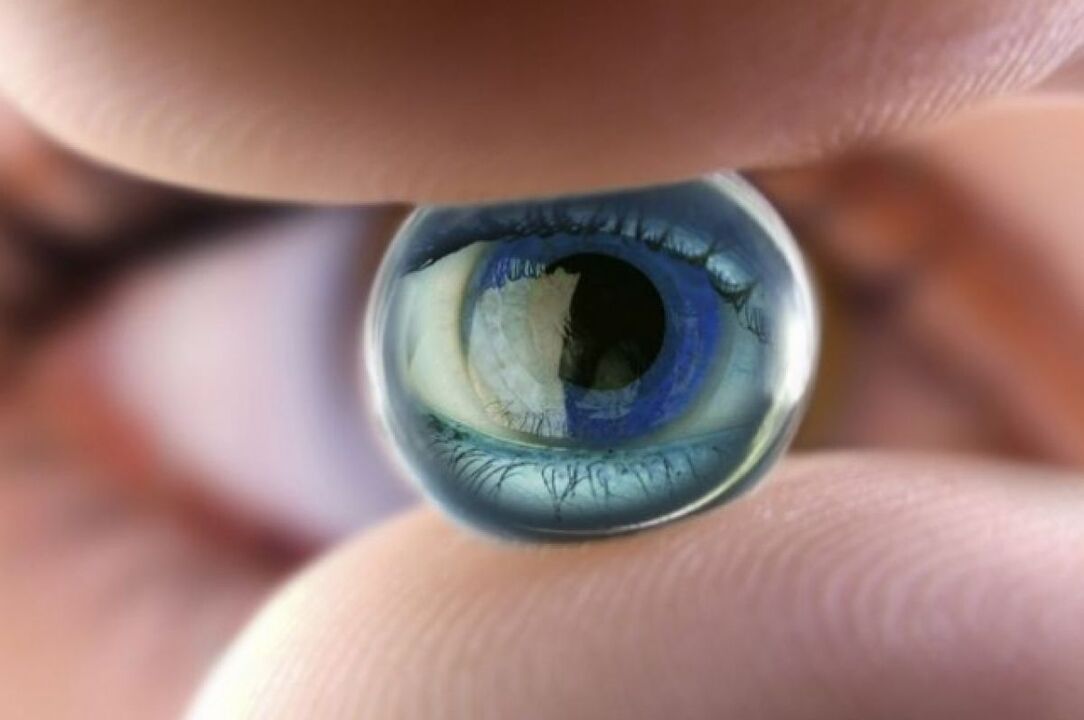
Wear glasses or contact lenses and dream of seeing a clear picture without the "Crut him for the eyes"? You are not alone. About a third of people on the planet suffer from violations of visual acuity, wanting to restore it and look at the world in a new way. Easy refraction problems that arose due to overvoltage are well lended to correction and can be fixed at home. However, only a qualified surgeon who will select an effective treatment method will save from serious myopia, astigmatism or farsightedness.
Visual restoration methods at home
The prevalence of myopia and farsightedness among patients of different ages makes ophthalmologists look for all new methods of their quick, effective and painless elimination. Every day, hundreds of people try different techniques to improve vision, hoping to get rid of wearing glasses and contact lenses. The following methods of treating refraction disorders are most widely used:
Special sets of exercises
If you often visit an ophthalmologist, you are probably familiar with correctional gymnastics for the eyes. It is used to prevent visual disorders, recovery after operations, eliminating myopia. As a rule, such a complex includes exercises with moving the gaze up, down, sideways, in a circle, etc. Such classes with weak degrees of myopia give a good effect, with a spasm of accommodation due to prolonged eye tension, with frequent work at the computer. With more serious violations, the effect will be less noticeable.
Bates method
Also built on the eye "training". It consists in the alternation of passive and active exercises. The most famous among the first is palming, the purpose of which is to relax the organs of vision as much as possible, limiting the access of light to them, to achieve complete calm.

For this, the eyes are closed with their palms for a few minutes until a black field appears in front of them instead of light spots. Dynamic exercises are built on classical gymnastics using visual turns, rotations, eyes, blinking. Bates also proposed to use the energy of the Sun (Solarization technique) and pirate glasses for the treatment of myopia, in which one side is closed with black paper or fabric.
Zhdanov's method
Based on the examination of the verification ophthalmic table. It consists in the daily "reading" of letters on it: first in turn each eye, then both together. Training is done at least 5 minutes three times a day. Then the complex is complicated by exercises for moving the gaze, blinking, focusing, which alternate with the viewing of the table.

Hardware method
Allows you to stop the progression of myopia and farsightedness, improve visual acuity, and sometimes completely restore it. Based on the use of special ophthalmological simulators, which:
- relieve tension of the eye muscles;
- improve blood flow in the area of the organs of vision;
- help to quickly recover after operations;
- Eliminate spasm at high visual loads.

Therapy courses with glasses, as a rule, are prescribed 2 times a year. Semengers can be used in children and adults.
Hard night orthocratological lenses
They can improve vision in a short period without surgical intervention, stop progressive myopia. They can be used in children over 7 years old, in adults-up to 50-60 years. They help in the early stages of myopia (up to -10 diopters), astigmatism (up to -1. 75), farsightedness (up to +4 diopters), adjusting the cornea to the correct shape. Unlike classic contact lenses, which are worn during the day as an alternative to glasses, therapeutic are worn strictly at night. After awakening, a person sees well and during the day it can do without devices to increase visual acuity. The disadvantage of the methodology is the need for prolonged use of ortholins, unpleasant sensations when putting on, the complexity of the selection, the presence of restrictions.
Medication and folk therapy
For the treatment and prevention of refraction disorders, special drops can be prescribed that help restore eyes after injuries, improve the state of the retina, remove the spasm of the visual muscles, and improve blood circulation.

As an alternative, pharmacy products are popularly practiced by treatment with strong black tea with honey (drip 1 drop for 2 weeks), raspberry infusion (applied to the eyes), carrot juice (drink on a hill), contrast baths. But they do not give a significant effect and require caution in use.
Laser correction and implantation surgery
The most progressive methods, which eliminate even severe refraction disorders, prevent the development of age -related vision changes, allow you to completely abandon wearing points.
Specialists in ophthalmology also take an important place in the elimination of refractive violations of proper nutrition with an emphasis on vitamins A, B, C, E, Elena, Zinc trace elements, a healthy lifestyle, a positive mood. A good effect in the treatment of the eyes gives massage, the alternation of visual stress and rest, special complexes based on blueberries, natural carotenoids.
Is it possible to quickly improve vision?
The ability to see well today is available to almost everyone. Technologies of microsurgery of the eye do not stand still, offering more and more advanced correction methods. Safe, painless and comfortable.
Laser operations to eliminate ametropia are carried out in 15-30 minutes, after which the patient can immediately return home. Complete recovery will take from 1 to 5-7 days, but during this period you will see normally without glasses, needing only careful care of your eyes.
Experts work with different abnormalities of refraction:
- myopia;
- hyperopia;
- astigmatism;
- Mixed pathologies.
In a professional ophthalmological clinic, they will help even in difficult cases. Doctors will eliminate even severe myopia (up to -25 d), farsightedness (up to +20 d) and astigmatism (up to 6 d). They will help people with a thin cornea, keratoconus, age -related changes in the lens and retina.
How to fix vision: modern methods
You can restore the ability to clearly see without "injections in the eye", wearing bandages or being in a hospital for several weeks. After surgery, there is a slight discomfort, which, as a rule, disappears within a couple of hours (sometimes - days). The operation to correct vision is carried out in 20-30 minutes, of which the action of the laser is allotted only 20-30 seconds.
What methods are used to eliminate ametropia in professional clinics? First of all, laser correction:
Laser vision correction
Fast and safe technique to return visual acuity. Changes the curvature of the cornea, maintaining the integrity of its front wall. It differs in a minimum list of contraindications, does not require long -term recovery (healing occurs during the day). In the process, 1 micro-outle (2-4 mm) is made with a femo-axcound laser through which the "excess" fabric of the cornea (lenticula) is removed.
The average time in the operating room is 20 minutes, the laser is 25 seconds. Due to the gentle nature of the procedure, the sensation of a foreign body in the eye passes already 2 hours after the intervention.
Preparation: rejection of contact lenses and makeup on the day of the operation.
Feelous vision correction
An operational, painless and effective technique that reduces the risk of postoperative deformations to 1/10000. Recommended for patients with farsightedness (up to +6. 0 D), myopia (up to -10. 0 D), mixed with astigmatism (± 3. 0 D). Suitable for people with a gentle and moderately thin cornea, complex pathologies. It allows you to improve vision while maintaining contrasting sensitivity, normal perception at dusk, in foggy and rainy weather. It is carried out by a high -precision femtosecond laser, which makes a thin incision on the surface of the cornea (up to 20 mm).
The time in the operating room is no more than 25 minutes, surgical intervention - up to 1 minute. Primary healing occurs within 2 days, the complete restoration of visual functions is in a few weeks.
Preparation: Refusal of contact lenses 1-2 weeks before the procedure, cosmetics, perfumes-for several days.
Photo refraction keratectomy
It is performed on the outer layers of the cornea, without changing the inner structure of the eye. It has restrictions on the degree of ametropy: myopia -from -1. 0 to -6. 0 d, astigmatism -from -0. 5 to -3. 0 d, farsightedness -to +3. 0 D. It is applied whenVisual restorationother methods are impossible. Suitable for people with an thinned cornea. The operation is carried out on an outpatient basis within 1 day. The visual functions are completely restored within a month. The wearing of protective lenses is recommended within 3-5 days after intervention to reduce unpleasant sensations and accelerate healing.
In situations where laser correction is impossible or inappropriate, implant operations are used:
- Fakik intraocular lenses. It implies implanting a biomocratemed lens through a micro -outle up to 1. 6 mm. The operation is reversible (the lens is preserved). It is recommended to people under 40 years of age with high degrees of myopia (up to −25. 0 D), hyperopropy (up to +20. 0 d), astigmatism (up to 6. 0 D), which have contraindications to laser correction. The lens with a positive or negative optical force is placed in the front or posterior eye of the chamber (seams are not required). The operation takes about 15 minutes, is performed on an outpatient basis. Visual functions are restored during the day.
- Multifocal contact lenses.Recommended for people with age farsightedness, cataracts, myopia, astigmatism. They allow you to see well in the distance and near. Implantation of a multifocal lens is carried out through a micro -output of 2. 5 mm. The first time after the operation, distortions of pictures, color perceptions that disappear as they get used to the lenses (within 2-3 months) can be observed.
- Refractal replacement of the lens, lazectomy.It is recommended for strong ametropias, changes in the lens, eye injuries, the threat of glaucoma against the background of myopia and hyperopia. It involves the replacement of its own lens artificial through a micro -outlet up to 2. 5 mm. After implantation, good eyesight remains forever, the risk of cataracts is excluded. The operation lasts 15-20 minutes. Rehabilitation period-3-4 weeks.
Indications and contraindications: Is correction always possible?
Correct refraction disordersCanWith any degrees of farsightedness, myopia and astigmatism. If low acutevisionIt interferes with living, delivering discomfort, does not allow you to do what you love, contact a specialized clinic. We will helprestore"A clear picture" without pain, fear and prolonged rehabilitation.
Each correction method has restrictions that relate to both the general state of the body and directly to the eye apparatus. For example,Restore visionlaserMaybeOnly up to 40-45 years, until age changes have begun to progress. After violation of refraction, it is eliminated by implantation of lenses or replacing the lens. As a rule, correction is not made to children and adolescents, since during this period the characteristics of the eye apparatus change and the risk of "miss" with the volume of intervention is changing.
An absolute contraindication to operations can be:
- multiple sclerosis, diabetes mellitus;
- progressive cataract, glaucoma;
- infectious and inflammatory diseases;
- blood coagulation disorders;
- renal and laundry failure;
- Serious pathologies of the cardiovascular system.
More detailed contraindications are indicated on the page of each technology. The smallest number of restrictions is in a minimally invasive method, which is suitable even for patients with dry eye syndrome and thin cornea.
Why is it better to restore vision in the clinic?
See the world without glasses and contact lenses after correction -HowReview. The usual items acquire clear outlines, and life pleases with new colors. So that the result does not disappoint, undergo an operation onimproving visionIt is only with professionals.
Specialized clinics offer patients with visual impairments:
- comprehensive examination and consultations with experienced ophthalmologists;
- individual selection of correction methods;
- outpatient operations under the control of qualified surgeons with local anesthesia and the possibility of sedation;
- the use of high -precision lasers with a personalized profile;
- compliance with existing hygienic standards and requirements of ISO 9001;
- the minimum risk of complications due to minimally invasive methods of intervention and 20-year experience in the field of laser correction;
- Effective treatment of cataracts, glaucomas, retinal diseases, keratoconus.
The price of services byrestoration of visionDepends on the technology that is used to eliminate ametropy. When applying a laser methodology, the degree of refraction violation also affects the cost of the procedure.




















